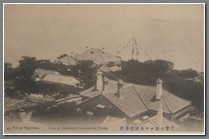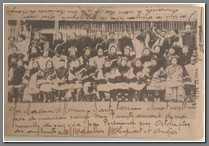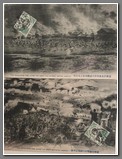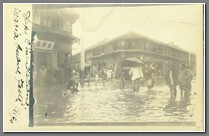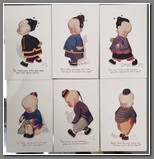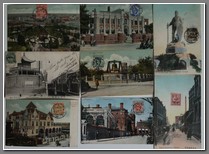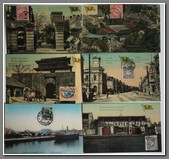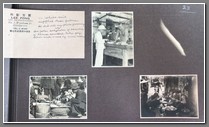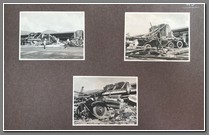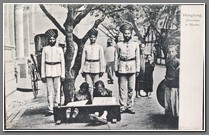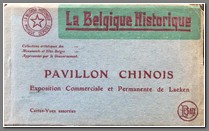Photos and Postcards
Album of 131 photos of Hong Kong, taken around 1925. The photographer was Lee Fong, of No. 7 Wyndham St., Hong Kong (shown in white suit on page 23). Series of 20 photos of a Chinese funeral, with captions. Much on life in Hong Kong. B
Price: $1200.00
 CPPC 040 CPPC 040 |  CPPC 040 CPPC 040 |  CPPC 040 CPPC 040 |
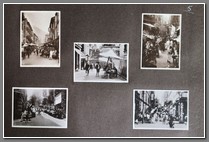 CPPC 040 CPPC 040 | 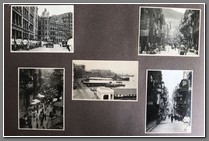 CPPC 040 CPPC 040 | 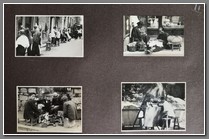 CPPC 040 CPPC 040 | 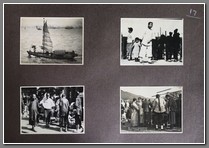 CPPC 040 CPPC 040 |
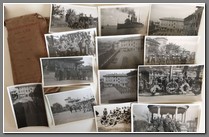 CPPC 039Archive of 77 photos belonging to an Italian marine named Fabricio Francesco while based in Tientsin, China in 1928. Much on the Italian military in China, local Chinese military, reviews in front of the Chinese public. Most photos not captioned; a number contain Tientsin stamps on reverse. Contains original cover package from the Tientsin photo shop where the film was developed. No commercial photos in the archive (except one). B
CPPC 039Archive of 77 photos belonging to an Italian marine named Fabricio Francesco while based in Tientsin, China in 1928. Much on the Italian military in China, local Chinese military, reviews in front of the Chinese public. Most photos not captioned; a number contain Tientsin stamps on reverse. Contains original cover package from the Tientsin photo shop where the film was developed. No commercial photos in the archive (except one). B
Price: $600.00
Note: Following the Boxer Rebellion, Italy along with ten other nations, were allowed to keep legations in China and occupied Kuan-tsung, Lan-fang, Yang-tsun, Tientsin, Kiun-lang-Chang, Tangku, Lu-tai, Tangcian, Luanciao, Cian-li, Chi-Kuan-tao and Shanhaikuan. Italy maintained troops in North China until 1904, which were then replaced by roughly 250 sailors from the Royal Marines. On November 4, 1924 a company of marines under the command of Lieutenant Ruggero Poli, landed from RN "Libya".
This was followed by another group under the command of Commander Angelo Jachino. Shortly thereafter, Mussolini approved the establishment of a battalion in China based at Tientsin. The battalion contained three companies with a total of 300 men, 20 machine guns and several mortars.
The duties of the Italian Battalion were to maintain communications between Beijing and the sea; to protect the lives and property of Italians and foreigners in times of civil disorder and act as a covering force for the landing of reinforcements that might be called upon.
The Battalion was officially constituted in Tientsin on March 5, 1925. The companies that formed the Battalion were the " San Marco, "Libya, " and " San George ". Company San Marco was placed in the premises of the Italian Police in Tientsin; Company Libya , in mid-Shan Hai Kuan and in Beijing; Company San George in Beijing on the premises of the Legation Guard. Construction began of the Barracks "Ermanno Carlotto" to house the new Battalion.
Company Libya was moved to Tientsin in November, 1925, due to the severe local situation created by the war between Li-Chin-Lin and Feng-Yu-Hsian and later sent to protect the railway bridges from Tangku to Loutai. The San Marco at the same time was assigned to the defense of the Italian Concession. For the worsening situation, the San George was ordered to leave Beijing and go to Tientsin.
The Company departed on December 10, 1925, but the train that carried her to Tientsin stopped at Lang-Fang due to the failure of some bridges that took place between the two lines of the belligerents and was forced to return to Beijing and was unable to reach Tientsin until the 25th.
The Barracks "Ermanno Carlotto" was inaugurated in April 1926 by the Minister of Italy in Beijing. In early 1927, due to the difficult situation that had arisen in Shanghai from the fighting between the warring factions, the Battalion was reinforced in order to prepare for the defense of the foreign settlement in Shanghai. During this period the San Marco was moved to Shanghai temporarily.
On November 6, on the anniversary of World War 1, the Captain of the Battalion, L. Gasparri, presented the Brigade with a pennant. On April 18, 1928 the Battalion received a visit, unofficially, from the young ex-emperor of China, Pu Yi, who lived in Tientsin. For the occasion, the whole battalion paraded. On special occasions, for the benefit of the foreign colony and authorities, the Brigade would give a gymnastic performance at the barracks.
Complete booklet of 10 postcards of the Chinese Pavilion at the Laeken Exposition.
Price: $200.00
Note: The Chinese Pavilion was commissioned by Leopold II and now form part of the Museums of the Far East. The rooms of the Chinese Pavilion are designed in chinoiserie Louis XIV and Louis XVI styles. They are decorated with Chinese motifs, chinaware and silverware. The Japanese Tower is a pagoda (known as a Tō), inspired by a construction Leopold II saw at the Paris Exposition of 1900. Leopold II asked his architect Alexandre Marcel to build him a similar one in Laeken.

